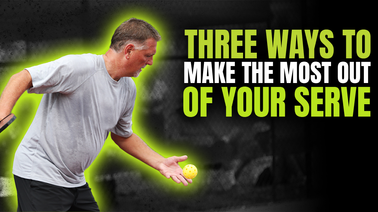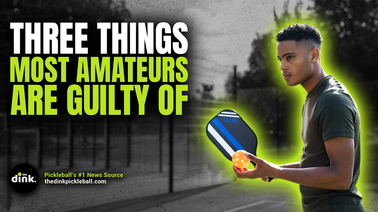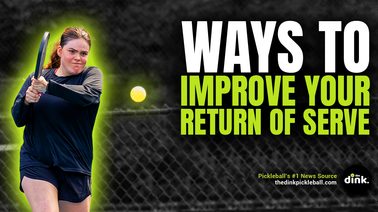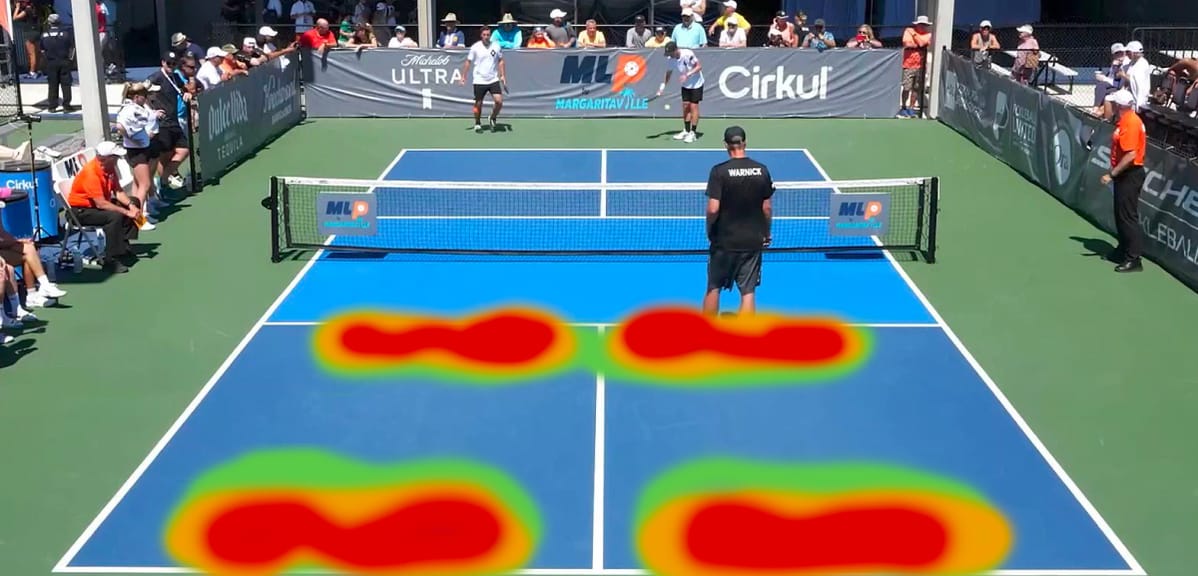
Illusory Pattern Perception bias occurs when people put meaning behind randomly occurring events or information.
It’s why some people are conspiracy theorists and why casinos make billions of dollars on table games.
Sign up today for the most informative newsletter in pickleball from The Dink!
In pickleball, patterns do mean something. And, if you’re not deciphering those messages, your game will suffer because of it.
Cue up Charlie Day Pepe Silvia scene, and let’s find some meaning in common pickleball patterns.
Understanding Patterns in Pickleball
In pickleball, patterns refer to the predictable sequences of shots and movements that occur during rallies. These patterns are more than just random occurrences - they are the result of the rules of the game, the court's geometry, and player strategies.
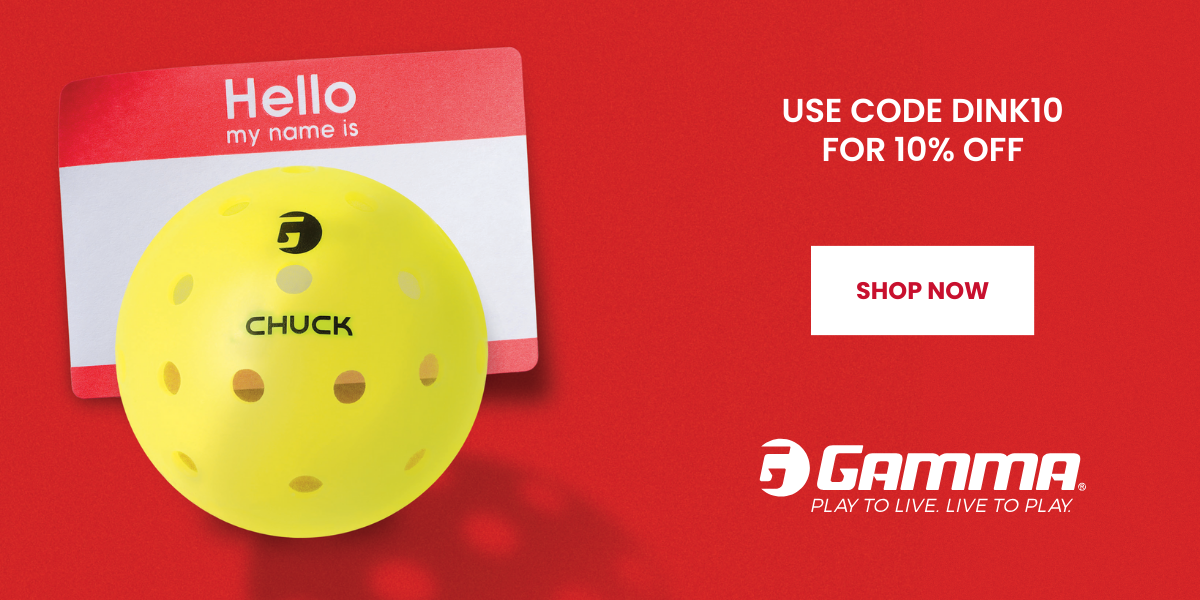
By understanding these patterns, players can anticipate where the ball will go and how best to respond, turning what might look like a chaotic back-and-forth into a controlled series of engagements.
How Patterns Impact Gameplay and Strategy
Pickleball patterns underpin the core of strategic play. Whether it's a singles match or doubles, reading and using these patterns can:
- Influence court positioning for optimal play
- Forecast ball trajectory to prepare for your next move
- Dictate the pace and flow of the game in your favor
By having a solid grasp of pickleball patterns, a player effectively 'reads' the court like a seasoned chess grandmaster visualizing moves before they are made. We’re talking chess people, not checkers!
Common Patterns in Pickleball
Now that I’ve (hopefully) convinced you that patterns do, in fact, exist in pickleball and that they are instrumental in taking your game to the next level, let’s (finally) get into some common patterns.
No. 1 - Third Shot Drop / Drive
Without much doubt, the most common pattern we see on the pickleball court happens on the third shot. Many recreational and professional players tend to drive or drop every third. Sometimes, it’s for strategic reasons, but oftentimes, it’s actually because the player is better at one over the other.
If hammering Hank from Tuesday Open Play is a banger through and through, the chances of him dropping a third (or fifth or seventh – but, I digress) are almost nil. You know he’s driving that ball; because you know this, you can fully prepare yourself and your paddle as the return goes his way.
Meanwhile, his teammate – we’ll call him “soft-game specialist” Steve – believes in the tried and true method of dropping every third ball crosscourt no matter how soft of a return he gets. Once again, you can prepare ahead of time for this, too.
How to Counter This Pattern
Against a banger, there are two rules of thumb. A simple block volley should do nicely if you can’t handle punching the ball back to them. If they come at you again, you probably just want to get out of the way and let the ball sail long out of bounds. If you can handle their heat, then do what Zane says and hit counterattacks to slow down their aggressive play.
To beat the cross-court drop, it’s all about positioning. If they make a good drop, you may only be able to reset it back to the kitchen and allow your opponents to get to the kitchen line with no resistance. However, you can do serious damage on your fourth shot if it’s anywhere attackable.
- You can position yourself for an Erne
- You can roll volley your fourth shot at your opponent’s feet
- Or you can step back and speed the ball up as they attempt to reach the NVZ line
By understanding your opponent’s third-shot pattern, you can put yourself in a great position early to win the rally.
Also, a side note: the evolution of the third-shot has become a third-shot drive followed by a third-shot drop. If you have a crafty opponent, they may implement this strategy on you. Adjust accordingly.
No. 2 - The Triangle Rule
We won’t talk too much about this one because we’ve already covered it.
But, essentially, the triangle rule states that if a ball is sped up straight ahead, there is a great chance the next ball will go toward your partner. Which means they need to be ready for your speedup as much as you are. And similarly, if you’re sped up on unexpectedly, your partner should be ready for the action to make it their way eventually.
This is how pros have such fast hands. They anticipate the geometry of pickleball and adjust their bodies and paddles before their opponent even hits the ball.
No. 3 - The “Oh, Sh*t” Pattern
For many players under 4.0, maybe even a bit higher, there seems to be an “Oh, Sh*t” pattern as in, “I’m out of position, and my opponent just hit where I least expected, so I’m just going to drive the ball and hope for the best.” Most often, this happens when someone is taken out wide, either with a good roll dink or facing a ball along the sideline as they’re coming up to the kitchen.
Our brains just short-circuit for a moment, and you can see the horror on their faces as they try to pivot and hit the ball as hard as possible.
How to Counter This Pattern
The “Oh, Sh*t” shot has three options: sideline, middle, and cross-court. Fortunately, the cross-court shot goes out of bounds almost every time.
Defending the other two options is simple:
- The player that’s directly in front of the person hitting the ball covers the sideline
- The player cross-court takes their position on the “T” (where the kitchen line and the centerline meet)
The reply to their shot is a simple volley right in their vacated area. You might be saying, “Their teammate is covering that area, right?” You’d be amazed at how often this does not happen, at least at the lower levels.
If you’re playing higher levels, then it’s less likely this pattern exists as often. But, at least now, you’ll recognize it if it does.
If you want to test whether your opponent has an “Oh, sh*t” pattern, simply send them a wide dink during a rally. See how they respond.
How to Find Patterns
Of course, there are hundreds of patterns in pickleball. But these three will help you start to see patterns for yourself. Doing it while playing is difficult, so try to find them while watching others play or record your own recreational games to watch later on.
Keep a few notes on each player. For instance, how often do they drive their third instead of dropping it? Or what their go-to shot is when they’re in an uncomfortable position (Hint: for some, it’s a lob).
If these are people you play with regularly, then knowing their patterns will help you win more games and recognize even more patterns to exploit while you’re on the court.
I’m not saying you need to get some red string and corkboard to create your own pickleball “murder board,” but I’m not not saying you shouldn’t do that either.




